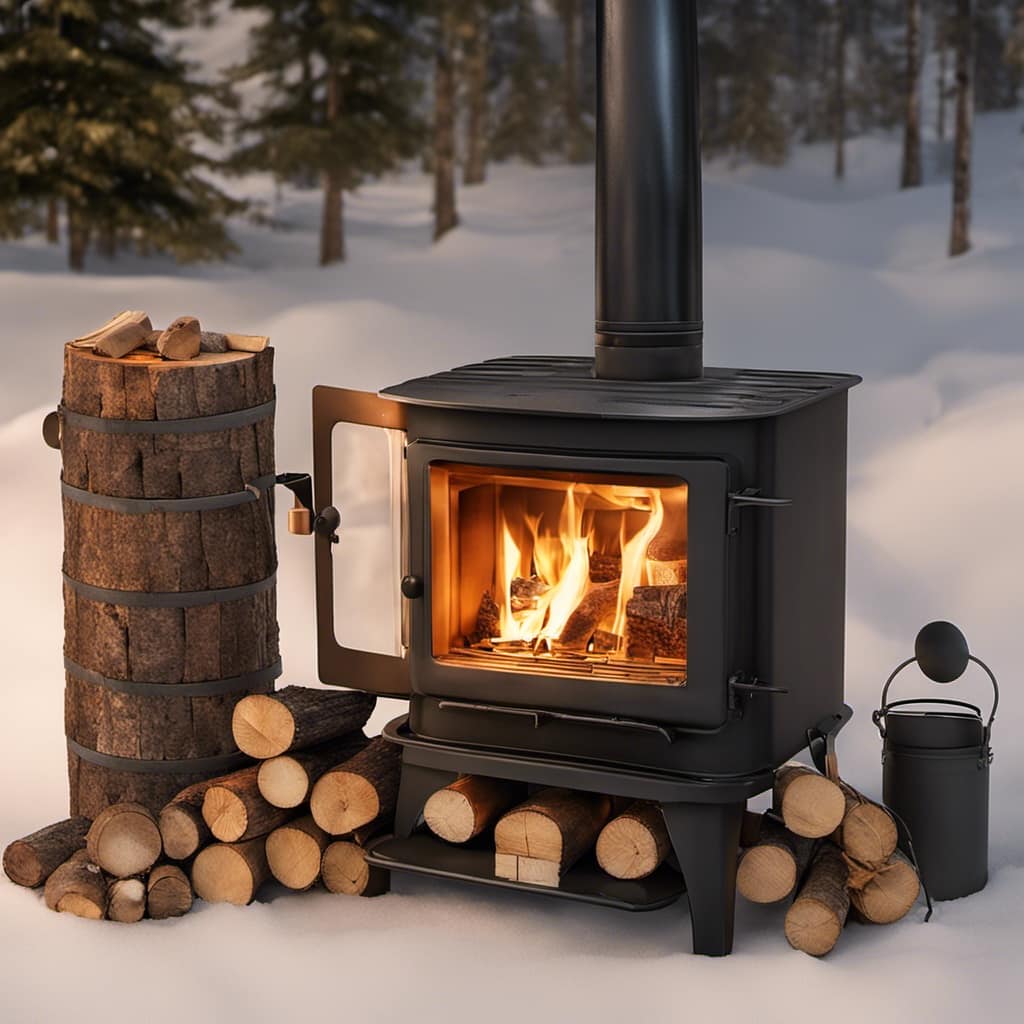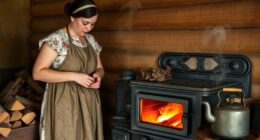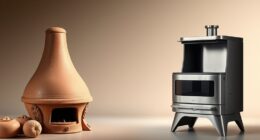I have found the secret to maximizing the efficiency of a catalytic wood stove after years of experience as a wood stove enthusiast.
In this article, I’ll guide you through the steps to effectively use and maintain this efficient heating appliance.
From preparing the stove to controlling the airflow, I’ll provide you with detailed instructions and useful tips to ensure maximum efficiency.
Let’s dive in and harness the power of this remarkable piece of technology.
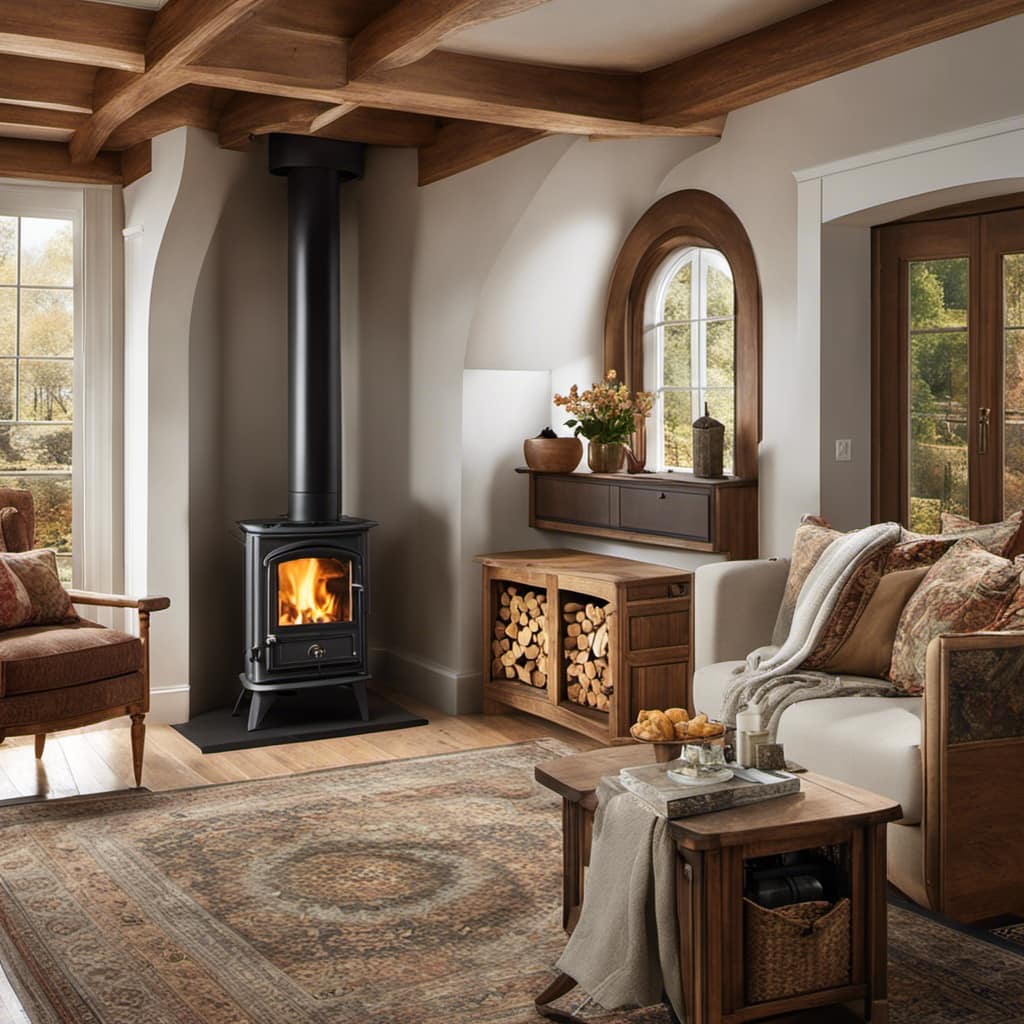
Key Takeaways
- Use seasoned hardwood like oak or maple for longer and cleaner burn
- Avoid using softwoods like pine or cedar to prevent excessive creosote buildup
- Proper fuel selection and stove maintenance are essential for optimal performance and safety
- Regularly clean the stove, especially the catalytic converter, to maintain efficiency
Preparing the Wood Stove
I’m getting the firewood ready for the wood stove.
Wood stove maintenance is crucial for optimal performance and safety. One important aspect is proper fuel selection. It’s recommended to use seasoned hardwood, like oak or maple, which provides a longer and cleaner burn. Avoid using softwoods like pine or cedar, as they contain a high amount of sap, leading to excessive creosote buildup and potential chimney fires.
Before loading the stove, ensure that the firebox is clean and free of ash and debris. This will promote efficient combustion and prevent any blockages in the air vents.
By taking these steps, you can ensure that your wood stove operates efficiently and safely.
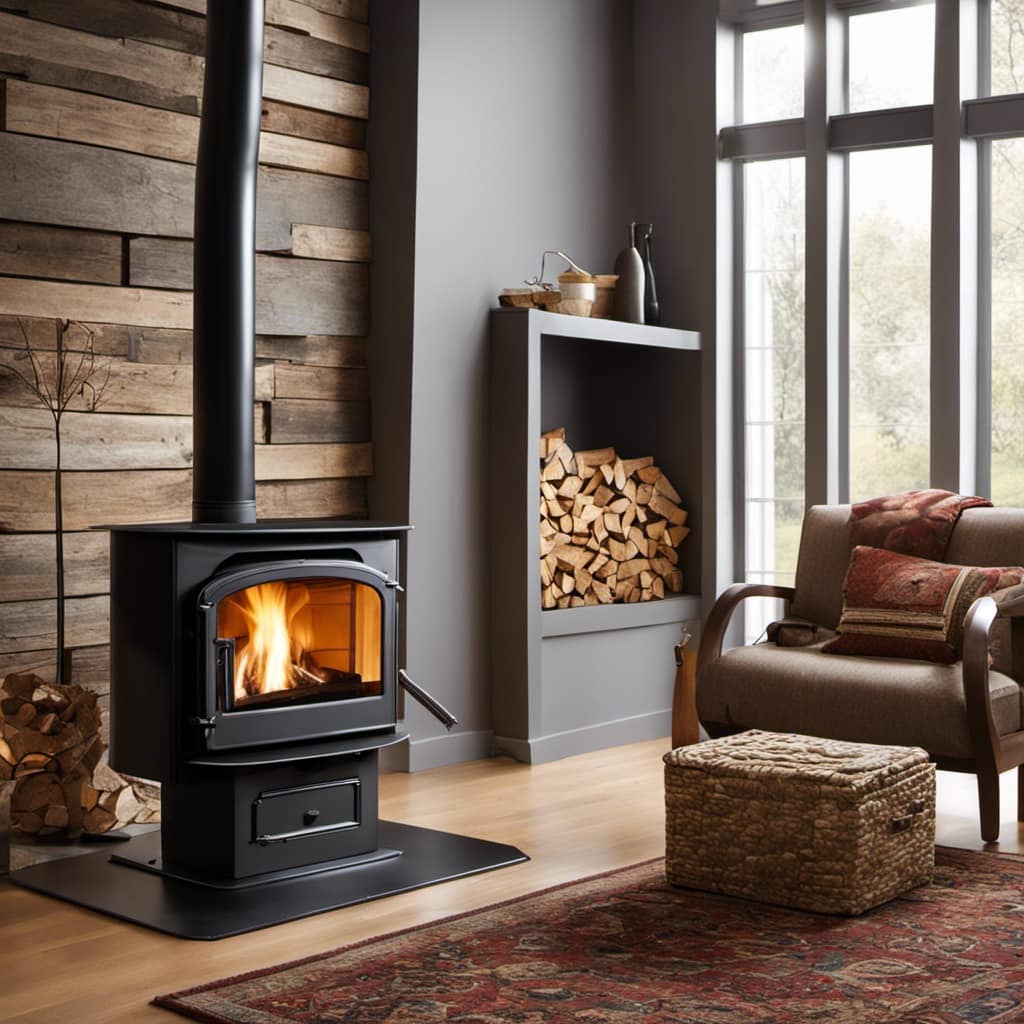
Now, let’s move on to lighting the fire.
Lighting the Fire
To get started, I’ll simply place some newspaper and kindling in the firebox and light them with a match. Here’s a step-by-step guide to lighting a fire in a catalytic wood stove:
-
Clear the area around the stove: Make sure there are no flammable materials nearby to ensure fire safety.
-
Open the damper: This allows air to flow into the stove and help ignite the fire.
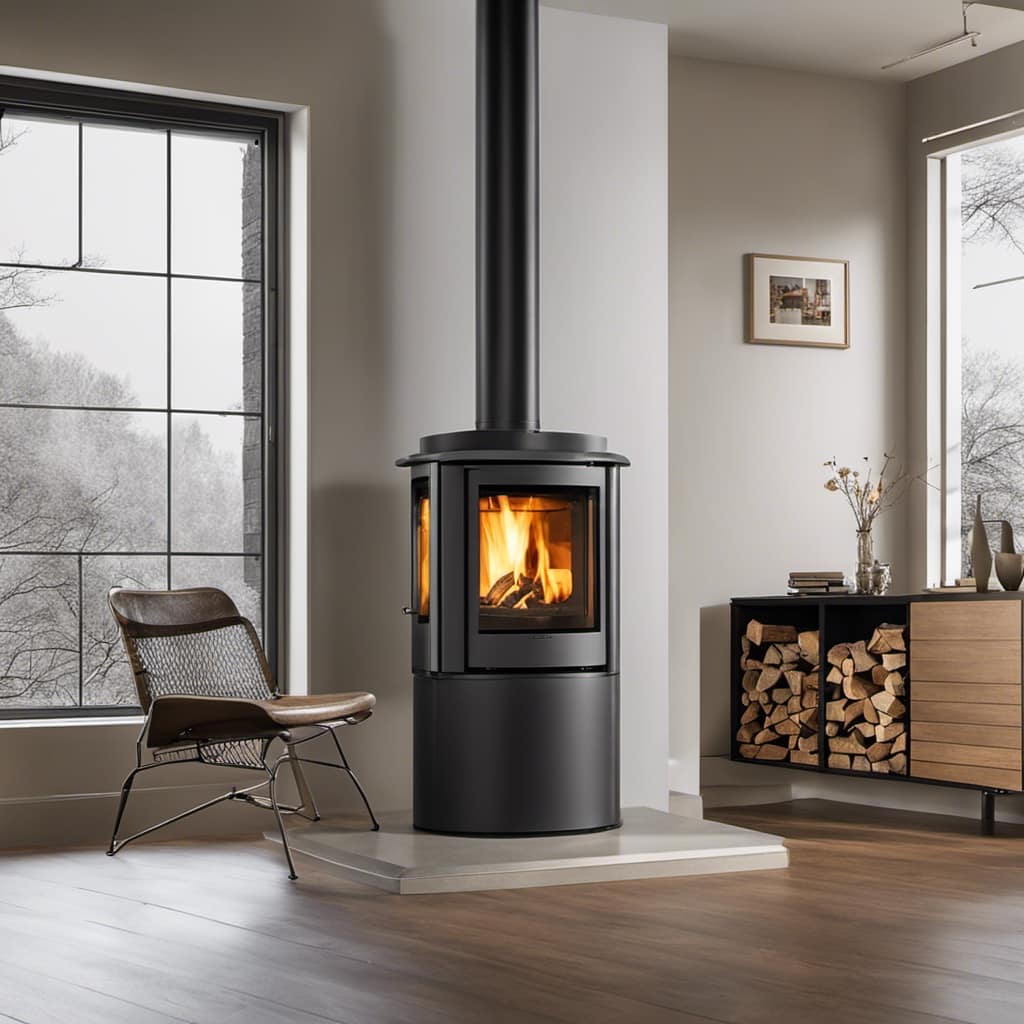
-
Place newspaper and kindling: Crumple up a few sheets of newspaper and place them at the bottom of the firebox. Then, add small, dry pieces of kindling on top.
-
Light the fire: Use a match or a lighter to ignite the newspaper. Once it starts burning, close the stove door and adjust the air vents to control the airflow.
Remember, choosing the right firewood is crucial for a safe and efficient fire. Opt for seasoned hardwood like oak or maple, as they burn cleaner and produce less creosote buildup.
Stay safe and enjoy the warmth!

Controlling the Airflow
Controlling the airflow is essential for maintaining a steady and efficient fire in the wood stove.
To adjust the airflow, I recommend starting with the damper. The damper is a small metal plate located above the firebox. By opening the damper, more oxygen is allowed into the stove, increasing the fire’s intensity. On the other hand, closing the damper restricts the airflow, reducing the fire’s heat output. It’s important to find the right balance to achieve optimal burning conditions.
Troubleshooting problems related to airflow can include issues such as a weak fire or excessive smoke. In these cases, double-check the damper’s position and adjust it accordingly.
Maintaining and Cleaning the Stove
Maintaining and cleaning the stove is essential for ensuring its longevity and efficiency. As a wood stove user, I’ve learned the importance of proper maintenance and cleaning techniques. Here are four key steps to keep your stove in optimal condition:

-
Regularly clean the ash: Remove the ash buildup from the stove’s firebox using a metal scoop or shovel. This prevents airflow blockage and allows for efficient burning.
-
Clean the glass door: Use a non-abrasive glass cleaner to remove soot and creosote buildup from the stove’s glass door. This not only improves the aesthetic appeal but also allows you to monitor the fire more effectively.
-
Inspect and clean the chimney: Regularly inspect the chimney for any blockages or creosote buildup. Hire a professional chimney sweep if necessary to ensure proper ventilation and safety.
-
Check and replace gaskets: Inspect the stove’s gaskets for any wear and tear. Replace them if needed to maintain a tight seal and prevent heat loss.
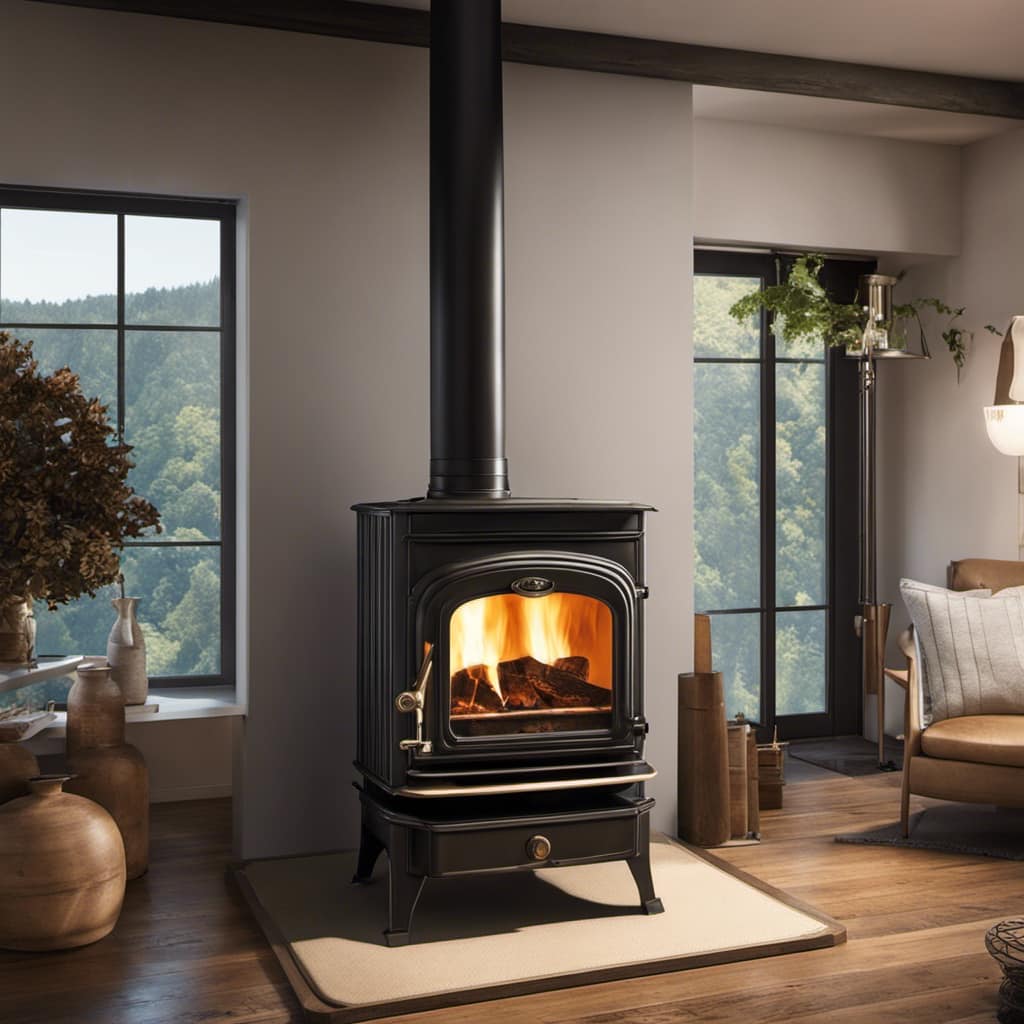
Tips for Maximizing Efficiency
As an owner of a wood stove, I’ve discovered several helpful tips for maximizing its efficiency.
One important tip is to ensure proper air circulation by using the stove’s air control mechanism effectively. By adjusting the air intake, you can regulate the burn rate and achieve optimal combustion.
Another tip is to use dry, seasoned wood as fuel. Moisture in the wood can cause excessive smoke emissions and reduce the stove’s efficiency.
Additionally, regularly cleaning the stove, especially the catalytic converter, is crucial for maintaining its efficiency. A clean catalytic converter ensures that the smoke passes through the catalyst, where harmful emissions are reduced.

Using a catalytic wood stove offers many benefits, such as increased heat output and decreased emissions.
Following these tips won’t only maximize your wood stove’s efficiency but also help reduce smoke emissions and contribute to a cleaner environment.
Frequently Asked Questions
How Can I Ensure That My Catalytic Wood Stove Is Installed Properly?
To ensure proper installation of a catalytic wood stove, follow these maintenance tips: 1) Check clearance requirements and ensure proper venting. 2) Install fireproof flooring and wall protection. 3) Hire a professional for installation if unsure.
Can I Use Any Type of Wood in a Catalytic Wood Stove?
Yes, you can use different types of wood in a catalytic wood stove. However, to maintain the efficiency of the stove, it is important to use properly seasoned hardwood that has a low moisture content.

What Safety Precautions Should I Take When Using a Catalytic Wood Stove?
When using a catalytic wood stove, safety precautions are crucial. Always keep flammable items away, use proper ventilation, and regularly clean and maintain the stove. These maintenance tips ensure a safe and efficient operation.
How Often Do I Need to Replace the Catalytic Converter in a Wood Stove?
I find it essential to understand the lifespan of a catalytic converter in a wood stove. Recognizing signs of a faulty converter is crucial for maintaining the stove’s efficiency and ensuring a safe environment.
Are There Any Government Regulations or Permits Required for Using a Catalytic Wood Stove?
There are government regulations and permits required for using a catalytic wood stove. It is important to ensure compliance with these rules to maintain safety and environmental standards when using this type of stove.
Conclusion
In conclusion, using a catalytic wood stove is a practical and efficient way to heat your home.
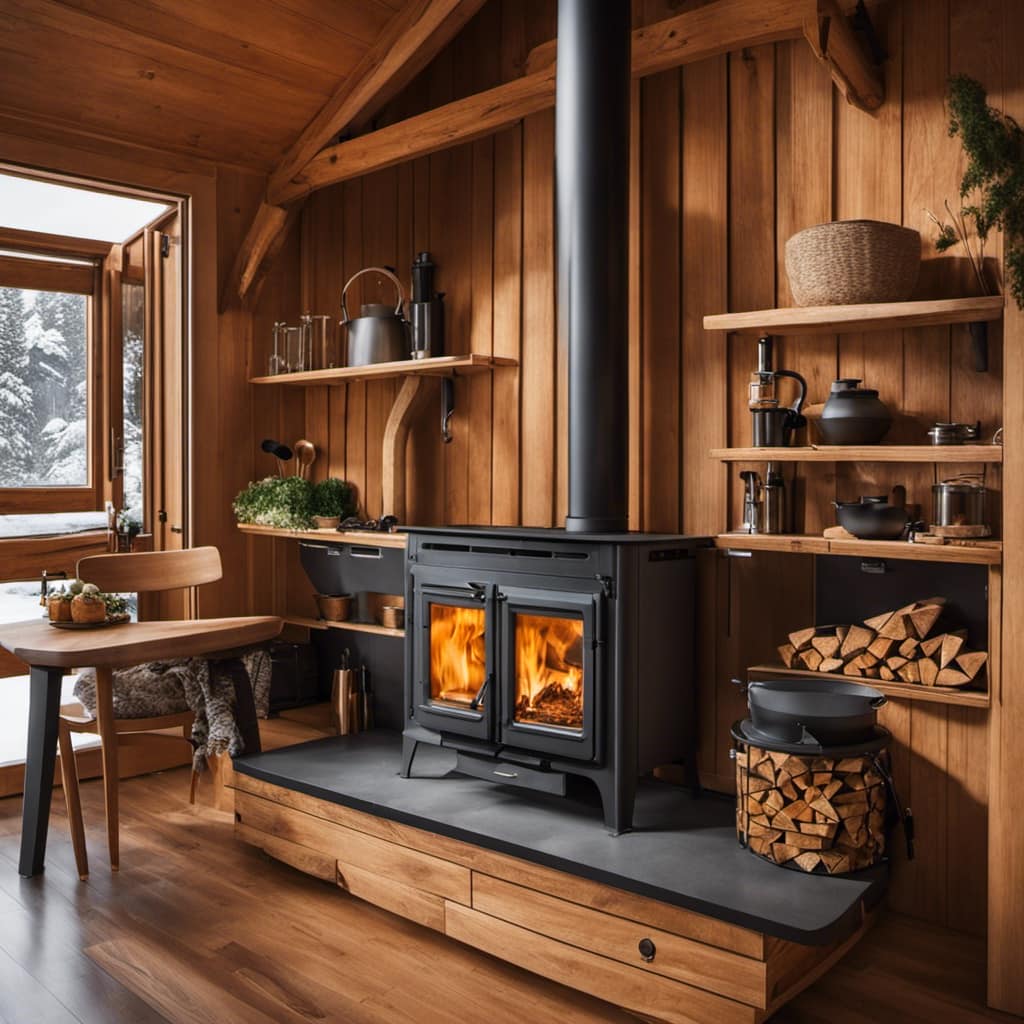
By following the steps outlined in this article, you can easily prepare the stove, light the fire, control the airflow, and maintain and clean the stove.
Remember, a catalytic wood stove is like a trusted companion on a cold winter night, providing warmth and comfort while reducing your carbon footprint.
So, grab your favorite book, snuggle up, and let the cozy flames dance in your catalytic wood stove.
Growing up surrounded by the vast beauty of nature, Sierra was always drawn to the call of the wild. While others sought the comfort of the familiar, she ventured out, embracing the unpredictable and finding stories in the heartbeat of nature.
At the epicenter of every remarkable venture lies a dynamic team—a fusion of diverse talents, visions, and passions. The essence of Best Small Wood Stoves is crafted and refined by such a trio: Sierra, Logan, and Terra. Their collective expertise has transformed the platform into a leading authority on small wood stoves, radiating warmth and knowledge in equal measure.





